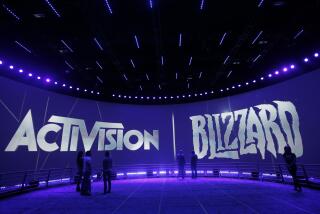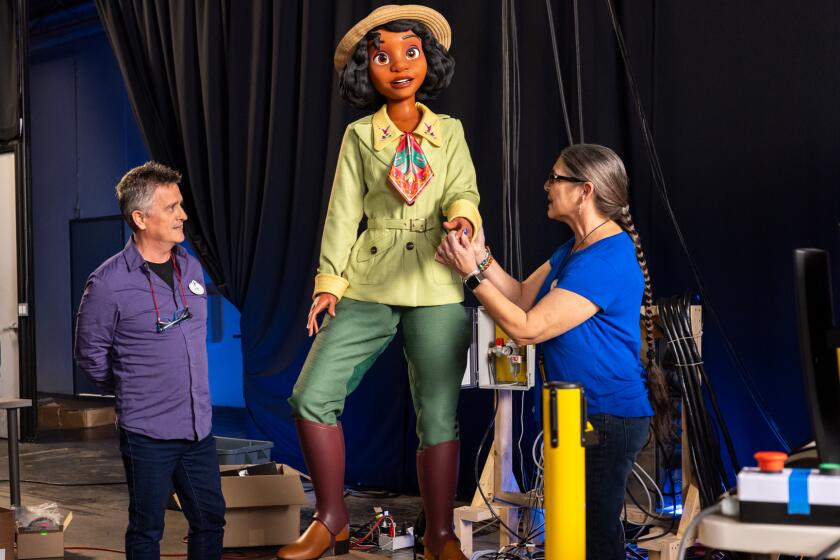Sony reveals new PlayStation 5 details that reignite the home console wars
Sony and Microsoft have now laid out their top-level ambitions for the next generation of video game consoles as the current versions see more play time than ever in this era of coronavirus-forced home sheltering. Welcome, in the words of Sony’s PlayStation 5 architect Mark Cerny, “to the dream of SSD.”
Actual game knowledge as it pertains to the PlayStation 5 and Microsoft’s Xbox Series X is largely still unexplored at this point. Instead, each company has begun making public some of the tech-focused conversations that they’ve been having with developers. The early talking point for both hardware creators has been the emphasis on the solid-state drives (SSD) that power the systems.
While the ultimate goal is to free developers to be more creative, Sony and Microsoft have early on emphasized speed.
“Game worlds are larger, more dynamic and load in a flash and fast travel is just that — fast,” wrote Microsoft’s Xbox head Phil Spencer in a recent post. Or, as Cerny more romantically said, “As a player, you wait for the game to boot, wait for the game to load, wait for the level to reload every time you die, then you wait for what is euphemistically called fast travel. And all of that leads to the dream: What if we could have not just an SSD, but a blindingly fast SSD?”
Sony’s Wednesday announcement was originally intended for San Francisco’s Game Developer’s Conference, which was postponed this year due to coronavirus concerns. It also follows previous Microsoft pronouncements about its next-gen plans. The Seattle-based company had showcased some of the features of Xbox Series X, which has a sleek, monolithic, smart-speaker-like design, and this week released more specs and a look at its controller. Sony has yet to pull back the curtain on the design of its PlayStation 5.
With the coronavirus putting people on edge, the newest ‘Animal Crossing’ edition has people asking Nintendo to release the game early. Here’s why.
Back in 2013, when Sony and Microsoft released the PlayStation 4 and Xbox One, there was talk that the devices would be the last major video game consoles, as entertainment was moving quickly to an on-demand, cloud-based architecture. While Google’s Stadia is steadily making improvements in the mainstream game streaming space, such a gaming future hasn’t yet become a reality. Content demands, wireless infrastructure and a monetization framework for developers have yet to perfectly coalesce, to overly simplify some of the challenges of a game streaming platform.
And yet challenges for the next generation of TV consoles lie ahead.
While there has yet to be any pricing info on either the PlayStation 5 or Xbox Series X, there have been reports and speculation that consumer costs could more closely start to resemble those of our home computers (or our smartphones). Typically, consoles have been a slightly cheaper alternative to the latter, although serious gaming remains a high-cost hobby regardless of device.
Additionally, as both Microsoft and Sony tout greater compatibility for games across their devices, some consumer education will be required to explain why a new console is more than an incremental improvement for the non-hardcore user, especially as we enter a period of financial uncertainty that are heightened by fears related to the coronavirus.
“I think you all know I’m a big believer in console generations,” said Cerny. “Once every five or six or seven years, a console arrives with substantially new capabilities. There’s a lot of learning by the game developers — hopefully not too overwhelming — and soon, there’s games that could never have been created before.”
Cerny offered some hints at how game players may see the effects of more power in their content, noting that so much of game development is designed to disguise the limitations of the hardware or a disc. For example: “Say we’re making an adventure game, and we have two rich environments where we each want enough textures and models to fill memory, which you can do as long as you have a long staircase or elevator ride or a windy corridor where you can ditch the old assets and then take 30 seconds or so to load the new assets. ... All those twisty passages are there for a reason.”
Eliminating load times, Cerny said, will not just make games faster for the end user, but in theory allow developers to stop creating around them and devote more time to the crafting of the core experience. No more, for instance, would moves from different game locales come with lengthy animations, such as a subway ride in “Marvel’s Spider-Man.” Environments can be streamed and built in real time. “What if,” Cerny said, “the SSD is so fast it’s possible to load textures for everything behind the player in that split second?”
Social distancing doesn’t mean not being social. These games, an inherently social medium, can help you stay calm and keep in touch with other people.
The guts of the PlayStation 5 and the Xbox Series X are relatively similar. There’s probably no need to get hung up at this point on Microsoft’s 12 teraflop GPU versus Sony’s 10.28 teraflop GPU when it comes to graphical prowess, or Sony’s greater emphasis on raw data transferring, as how these elements are used could sort of cancel one another out in the eyes of a person at home on the couch. A console is something of a tech puzzle, in which hardware manufacturers and developers can utilize the tools as a sort of instrument.
Sony was clearly anticipating a direct numbers-to-numbers comparison. “It is dangerous to rely on teraflops as an absolute indicator of performance,” Cerny said.
Both Sony and Microsoft have hyped how the consoles will allow for enhanced ray-tracing, which allows for more realistic lighting and shadow effects. Cerny spent a significant portion of Wednesday’s conference lecture discussing how audio will figure more heavily into the PlayStation 5 as he wants those without fancy speakers or headphones to feel the benefits of dimensional sound. If you can sense, Cerny said, where the audio is coming from — “to the right of you, behind you, above you” — “it can immerse you further in the game.”
Microsoft has put a heavier emphasis on consumer-friendly features of its Xbox Series X, namely extensive backward compatibility to all previous Xbox generations and the ability for the system to recognize, at least for exclusive titles, which Xbox system a player is using and then tailor the experience. Cerny noted backward compatibility with the PlayStation 4 was built into the PlayStation 5, but transferring your entire catalog to the PlayStation 5 could require some pricey external memory purchases.
Both Sony and Microsoft are planning to release their consoles by the end of 2020, although it remains to be seen how the current health crisis surrounding the coronavirus may impact everything from supply chains to software development, not to mention the very market for the machines.
“Now comes the fun part,” Cerny said. “We get to see how the development community takes advantage of that feature set.”
Yet the so-called “fun part,” like much of everything at the moment, is a great unknown.
More to Read
The biggest entertainment stories
Get our big stories about Hollywood, film, television, music, arts, culture and more right in your inbox as soon as they publish.
You may occasionally receive promotional content from the Los Angeles Times.







